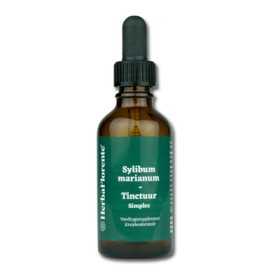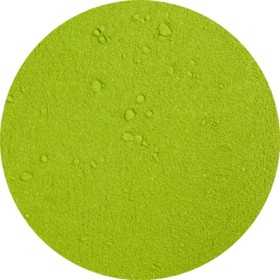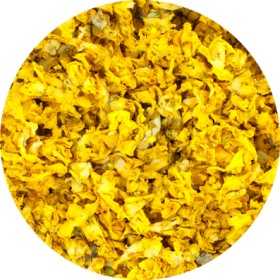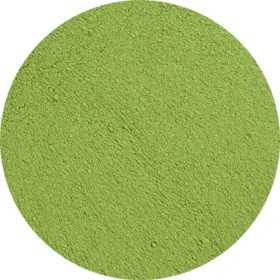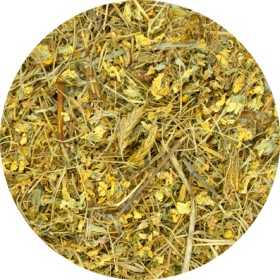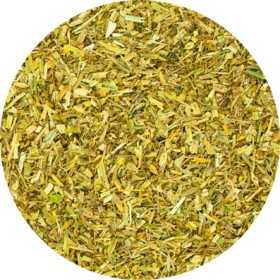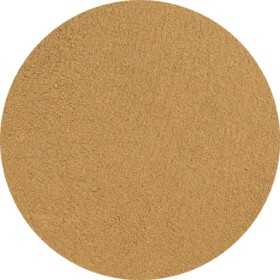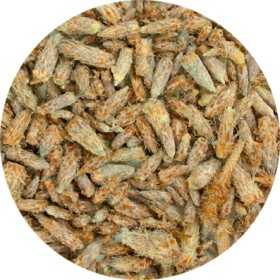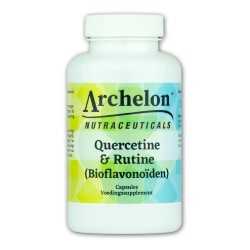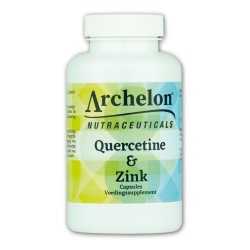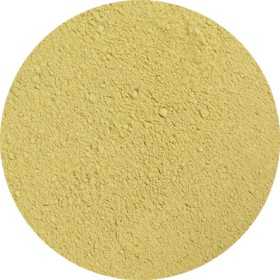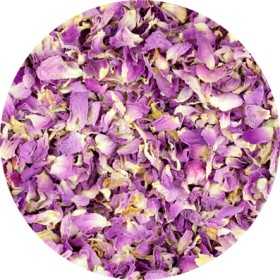Detoxify
There are 172 products.
Milk Thistle - 450 mg
Milk thistle (Silybum marianum), also known as milk thistle or milk thistle, is a spiny plant native to the Mediterranean region, but which also grows in our area. It belongs to the composite family. Milk thistle has been used for centuries as a natural remedy to support liver and bile function. It can be used as part of a cleansing regimen to assist the liver in the detoxification process.
The seeds of milk thistle contain silymarin, a powerful antioxidant. Silymarin stimulates the liver in the natural detoxification process and thus supports liver function.
The seeds of milk thistle contain silymarin, a powerful antioxidant. Silymarin stimulates the liver in the natural detoxification process and thus supports liver function.
€17.95
Milk Thistle Tincture - Sylibum marianum (Cardui Mariae) Tincture
Single herbal tincture made with dried seed of Sylibum marianum (Cardui Mariae) (Milk thistle).
Milk thistle (Silybum marianum), also known as milk thistle or milk thistle, is a spiny plant native to the Mediterranean region, but which also grows in our area. It belongs to the composite family. Milk thistle has been used for centuries as a natural remedy to support liver and bile function. It can be used as part of a cleansing regimen to assist the liver in the detoxification process.
The seeds of milk thistle contain silymarin, a powerful antioxidant. Silymarin stimulates the liver in the natural detoxification process and thus supports liver function.
Milk thistle (Silybum marianum), also known as milk thistle or milk thistle, is a spiny plant native to the Mediterranean region, but which also grows in our area. It belongs to the composite family. Milk thistle has been used for centuries as a natural remedy to support liver and bile function. It can be used as part of a cleansing regimen to assist the liver in the detoxification process.
The seeds of milk thistle contain silymarin, a powerful antioxidant. Silymarin stimulates the liver in the natural detoxification process and thus supports liver function.
€9.95
Moringa oleifera - 300 mg
Moringa oleifera, also known as the 'tree of life', thrives in Africa and Asia and is known for its rich nutritional value. The tree is a treasure trove of more than dozens of nutrients, including no fewer than 47 antioxidants. Containing minerals, proteins, vitamins, beta-carotene, amino acids and various phenols in abundance, the leaves of the moringa are the true storehouse of nutritional value.
For centuries, Asian and African cultures have recognized the benefits of moringa oleifera. The tree has become an integral part of their daily diet due to its versatile uses and nutritional value. Because of its abundant benefits, moringa oleifera is often affectionately referred to as "the tree of life."
For centuries, Asian and African cultures have recognized the benefits of moringa oleifera. The tree has become an integral part of their daily diet due to its versatile uses and nutritional value. Because of its abundant benefits, moringa oleifera is often affectionately referred to as "the tree of life."
€19.95
Moringa Tree - Moringa oleifera (Leaf Grounded)
Moringa oleifera, also known as the 'tree of life', thrives in Africa and Asia and is known for its rich nutritional value. The tree is a treasure trove of more than dozens of nutrients, including no fewer than 47 antioxidants. Containing minerals, proteins, vitamins, beta-carotene, amino acids and various phenols in abundance, the leaves of the moringa are the true storehouse of nutritional value.
For centuries, Asian and African cultures have recognized the benefits of moringa oleifera. The tree has become an integral part of their daily diet due to its versatile uses and nutritional value. Because of its abundant benefits, moringa oleifera is often affectionately referred to as "the tree of life."
For centuries, Asian and African cultures have recognized the benefits of moringa oleifera. The tree has become an integral part of their daily diet due to its versatile uses and nutritional value. Because of its abundant benefits, moringa oleifera is often affectionately referred to as "the tree of life."
€3.20
From: €3.20
Mullein - Verbascum thapsus
The mullein (Verbascum thapsus) is a member of the marram family (Scrophulariaceae) and mainly thrives in dune and chalk areas, where it is quite common. This plant is rare to find elsewhere in the Netherlands.
The flowers of the mullein are yellow and have a diameter of 1.5–3 cm. They consist of five connate petals, five sepals and five stamens, three of which are covered with yellow or white hairs. The flowers grow in dense spikes and bloom from July to autumn. An adult plant can reach a height of more than two meters.
The flowers of the mullein are yellow and have a diameter of 1.5–3 cm. They consist of five connate petals, five sepals and five stamens, three of which are covered with yellow or white hairs. The flowers grow in dense spikes and bloom from July to autumn. An adult plant can reach a height of more than two meters.
€5.00
From: €5.00
NAC (N-Acetyl-L-Cysteine) - 500 mg
N-acetyl-cysteine (NAC) is a form of the sulfur-containing semi-essential amino acid L-cysteine. It is found in dairy, meat, fruit and vegetables, but this is often insufficient and can best be supplemented through supplementation. The advantage that N-acetyl-cysteine has over cysteine is that it is better and more easily absorbed by our body. Furthermore, N-acetyl-cysteine supports production of the important tripeptide glutathione in our body. Glutathione plays a role in protecting our cells against oxidative stress.
€24.95
Nettle - 380 mg
The nettle (Urtica dioica) is a powerful and versatile plant that occurs in many places, despite its irritating property to the touch. Known for its culinary uses, such as nettle soup and tea, the nettle is also known for its health benefits.
Originally from Africa and Asia, the plant goes by the Latin name Urtica dioica and has been used for centuries. In herbalism, not only the dried leaves, but also the dried roots are used.
Nettle leaf is a traditional herbal medicine with various applications. It contributes to healthy skin, gives shine to the hair and strengthens the nails. In addition, it can help soothe the respiratory tract and maintain proper fluid balance. It also provides support to the heart and blood vessels.
Originally from Africa and Asia, the plant goes by the Latin name Urtica dioica and has been used for centuries. In herbalism, not only the dried leaves, but also the dried roots are used.
Nettle leaf is a traditional herbal medicine with various applications. It contributes to healthy skin, gives shine to the hair and strengthens the nails. In addition, it can help soothe the respiratory tract and maintain proper fluid balance. It also provides support to the heart and blood vessels.
€17.95
Nettle - Urticae dioica
The nettle (Urtica dioica) is a powerful and versatile plant that occurs in many places, despite its irritating property to the touch. Known for its culinary uses, such as nettle soup and tea, the nettle is also known for its health benefits.
Nettle leaf is a traditional herbal medicine with various applications. It contributes to healthy skin, gives shine to the hair and strengthens the nails. In addition, it can help soothe the respiratory tract and maintain proper fluid balance. It also provides support to the heart and blood vessels.
Nettle leaf is a traditional herbal medicine with various applications. It contributes to healthy skin, gives shine to the hair and strengthens the nails. In addition, it can help soothe the respiratory tract and maintain proper fluid balance. It also provides support to the heart and blood vessels.
€2.40
From: €2.40
Olive - Olea europaea
Olive leaves, from the wild olive tree (Olea europaea), are naturally rich in antioxidants. Originally native to western Asia, Egypt and Syria, these trees are now a distinctive sight throughout the Mediterranean region, as well as in regions such as South America, the southern United States, southern Australia and the tropics. Olive leaf tea has been consumed in the Mediterranean for centuries, and this is not surprising given the known antioxidant properties of olive leaves. It is therefore no coincidence that the olive tree is often referred to as the 'tree of life'.
€2.25
From: €2.25
Pansy, Herb trinit (Flower) - Viola tricolor
Out-of-Stock
The pansy (Viola tricolor) belongs to the violet family (Violaceae) and is native to Europe, from Lapland to the Mediterranean, and even in Siberia.
This plant, which is an annual but can sometimes be perennial, grows to a height of 30 cm and has roots that can go up to 45 cm deep. The flowering period extends from May to October. The flowers are at least 1 cm wide, but usually larger, with an average diameter of 1.5 cm.
The pansy was first described as a medicinal herb by Rembert Dodoens in 1554. It was traditionally used for childhood diseases and respiratory diseases. In England it was popular for treating heart disease, chest cramps and pleurisy
This plant, which is an annual but can sometimes be perennial, grows to a height of 30 cm and has roots that can go up to 45 cm deep. The flowering period extends from May to October. The flowers are at least 1 cm wide, but usually larger, with an average diameter of 1.5 cm.
The pansy was first described as a medicinal herb by Rembert Dodoens in 1554. It was traditionally used for childhood diseases and respiratory diseases. In England it was popular for treating heart disease, chest cramps and pleurisy
€7.00
From: €7.00
Pansy, Herb trinit Herb - Viola tricolor - Cut
The pansy (Viola tricolor) belongs to the violet family (Violaceae) and is native to Europe, from Lapland to the Mediterranean, and even in Siberia.
This plant, which is an annual but can sometimes be perennial, grows to a height of 30 cm and has roots that can go up to 45 cm deep. The flowering period extends from May to October. The flowers are at least 1 cm wide, but usually larger, with an average diameter of 1.5 cm.
The pansy was first described as a medicinal herb by Rembert Dodoens in 1554. It was traditionally used for childhood diseases and respiratory diseases. In England it was popular for treating heart disease, chest cramps and pleurisy.
This plant, which is an annual but can sometimes be perennial, grows to a height of 30 cm and has roots that can go up to 45 cm deep. The flowering period extends from May to October. The flowers are at least 1 cm wide, but usually larger, with an average diameter of 1.5 cm.
The pansy was first described as a medicinal herb by Rembert Dodoens in 1554. It was traditionally used for childhood diseases and respiratory diseases. In England it was popular for treating heart disease, chest cramps and pleurisy.
€2.00
From: €2.00
Parsley - Petroselini - Cut
Parsley (Petroselinum crispum) is a biennial, winter-hardy herbaceous plant belonging to the lacecap family (Apiaceae). It is used extensively in European, American and Middle Eastern cuisine for its fresh taste.
To the ancient Greeks, parsley symbolized joy and was used together with marjoram as a hangover remedy. The Romans spread the use of this herb throughout Western Europe. In the Middle Ages, parsley served as a vegetable and was grown, among other things, in the imperial gardens of Charlemagne.
Adding parsley (usually the leaves) to dishes is best done just before serving. It is often combined with garlic in butter to make herb butter and can also be used in salads. Ground parsley seeds serve as a spice.
To the ancient Greeks, parsley symbolized joy and was used together with marjoram as a hangover remedy. The Romans spread the use of this herb throughout Western Europe. In the Middle Ages, parsley served as a vegetable and was grown, among other things, in the imperial gardens of Charlemagne.
Adding parsley (usually the leaves) to dishes is best done just before serving. It is often combined with garlic in butter to make herb butter and can also be used in salads. Ground parsley seeds serve as a spice.
€2.20
From: €2.20
Pau D'arco - Tabeuiae
Pau d'arco (Tabebuia avellanedae) is an imposing tree that thrives in the Amazon rainforest. The bark of the pau d'arco has been used for centuries in traditional herbal medicine for its diverse uses, including its supportive effects on the immune system.
The inner layer of the bark of Tabebuia avellanedae is packed with flavonoids, powerful antioxidants that protect our bodies against oxidative damage caused by free radicals. In addition, it contains a significant amount of quinones. More than 20 quinone compounds have already been discovered in the bark of the pau d'arco, such as lapachol and beta-lapachone. In addition, the bark contains substances that help defend against unfavorable bacteria and fungi.
The inner layer of the bark of Tabebuia avellanedae is packed with flavonoids, powerful antioxidants that protect our bodies against oxidative damage caused by free radicals. In addition, it contains a significant amount of quinones. More than 20 quinone compounds have already been discovered in the bark of the pau d'arco, such as lapachol and beta-lapachone. In addition, the bark contains substances that help defend against unfavorable bacteria and fungi.
€2.60
From: €2.60
Peppermint Tincture - Menthae piperita Tincture
Single herbal tincture made with dried herb of Menthae piperita (Peppermint).
Peppermint oil (Mentha piperita) is often taken to support digestion. Peppermint is a member of the Lamiaceae family and is used for making peppermint candy.
In herbal medicine, peppermint has a long history dating back to ancient Greece. There, the fragrant peppermint leaf was traditionally used to aid digestion. Peppermint contains several essential oils, including menthol, menthone and cineole.
Peppermint oil (Mentha piperita) is often taken to support digestion. Peppermint is a member of the Lamiaceae family and is used for making peppermint candy.
In herbal medicine, peppermint has a long history dating back to ancient Greece. There, the fragrant peppermint leaf was traditionally used to aid digestion. Peppermint contains several essential oils, including menthol, menthone and cineole.
€11.95
Pine (Needles) - Pinus silvestris
The Scots pine (Pinus sylvestris) belongs to the pine family (Pinaceae) and can reach a respectable age of 200 to 300 years, thanks to its rich resin content.
In phytotherapy, the needles and buds of the Scots pine are used because of their content of tannins, flavonoids and vitamins. The oleoresin of this tree is rich in turpentine. This species is known for its abundant monoterpenes, such as α-pinene, β-pinene and limonene, which form an essential oil with expectorant, antiseptic, decongestant, venolymphatic and anti-inflammatory properties.
In phytotherapy, the needles and buds of the Scots pine are used because of their content of tannins, flavonoids and vitamins. The oleoresin of this tree is rich in turpentine. This species is known for its abundant monoterpenes, such as α-pinene, β-pinene and limonene, which form an essential oil with expectorant, antiseptic, decongestant, venolymphatic and anti-inflammatory properties.
€2.00
From: €2.00
Pine (Seedlings) - Pinus silvestris
The Scots pine (Pinus sylvestris) belongs to the pine family (Pinaceae) and can reach a respectable age of 200 to 300 years, thanks to its rich resin content.
In phytotherapy, the needles and buds of the Scots pine are used because of their content of tannins, flavonoids and vitamins. The oleoresin of this tree is rich in turpentine. This species is known for its abundant monoterpenes, such as α-pinene, β-pinene and limonene, which form an essential oil with expectorant, antiseptic, decongestant, venolymphatic and anti-inflammatory properties.
In phytotherapy, the needles and buds of the Scots pine are used because of their content of tannins, flavonoids and vitamins. The oleoresin of this tree is rich in turpentine. This species is known for its abundant monoterpenes, such as α-pinene, β-pinene and limonene, which form an essential oil with expectorant, antiseptic, decongestant, venolymphatic and anti-inflammatory properties.
€2.80
From: €2.80
Power Berries+ Formula
Our Power Berries+ Formula provides a balanced blend of nutrients specially formulated to support your overall health. This unique formula is packed with healthy fiber and essential nutrients, including polyphenols, phytonutrients, antioxidants and natural vitamins.
€57.50
Power Veggies+ Formula
Our Power Veggies+ Formula provides a balanced blend of essential nutrients to support your overall health. With an abundance of healthy fibers and nutrients, is Power Veggies+ Formula specially formulated to nourish and glow your body.
€59.50
Quercetin & Rutin (Bioflavonoids)
Quercetin is a flavonoid, also called bioflavonoid. This natural plant compound is found in various plants, fruits and vegetables. Flavonoids are responsible for the vibrant colors (pigments) in these plants and come in various shades. They play a crucial role in plant metabolism, regulate growth, and provide protection against UV light, oxidation and heat.
Rutin, also known as a flavonoid or bioflavonoid, is a naturally occurring substance in vegetables, fruits, herbs and plants. It is known for its vibrant pigmentation and can have different colors. Rutin plays several important roles in plants, such as regulating growth, protecting against UV radiation, oxidation and heat, and maintaining plant metabolism.
Rutin, also known as a flavonoid or bioflavonoid, is a naturally occurring substance in vegetables, fruits, herbs and plants. It is known for its vibrant pigmentation and can have different colors. Rutin plays several important roles in plants, such as regulating growth, protecting against UV radiation, oxidation and heat, and maintaining plant metabolism.
€32.95
Quercetin & Zinc
Quercetin is a flavonoid, also called bioflavonoid. This natural plant compound is found in various plants, fruits and vegetables. Flavonoids are responsible for the vibrant colors (pigments) in these plants and come in various shades. They play a crucial role in plant metabolism, regulate growth, and provide protection against UV light, oxidation and heat.
Zinc is available in different forms. Zinc bisglycinate has a very good bioavailability. It is a chelated form of zinc bound to two (bis) molecules of the amino acid glycine which has more benefits for the body. Zinc has a very wide range of action and is involved in many body processes. Zinc is essential for the activity of more than 300 enzymes that have the zinc ion as a cofactor.
Zinc is available in different forms. Zinc bisglycinate has a very good bioavailability. It is a chelated form of zinc bound to two (bis) molecules of the amino acid glycine which has more benefits for the body. Zinc has a very wide range of action and is involved in many body processes. Zinc is essential for the activity of more than 300 enzymes that have the zinc ion as a cofactor.
€34.95
Quercetin - 250 mg
Quercetin is a flavonoid, also called bioflavonoid. This natural plant compound is found in various plants, fruits and vegetables. Flavonoids are responsible for the vibrant colors (pigments) in these plants and come in various shades. They play a crucial role in plant metabolism, regulate growth, and provide protection against UV light, oxidation and heat.
Quercetin belongs to a group of plant compounds known as flavonoids. Many flavonoids contribute to the coloring of plants to some extent. In addition, quercetin is a powerful antioxidant. It can be well combined with other antioxidant flavonoids, such as rutin and vitamin C, for an enhanced effect.
Quercetin belongs to a group of plant compounds known as flavonoids. Many flavonoids contribute to the coloring of plants to some extent. In addition, quercetin is a powerful antioxidant. It can be well combined with other antioxidant flavonoids, such as rutin and vitamin C, for an enhanced effect.
€27.95
Red Clover (Flower) - Trifolii Rubr. pratense - Whole
Red clover (Trifolium pratense) grows naturally in Europe and Central Asia. Usually the leaves of red clover have three parts and a light purple flower blooms in the middle. In addition to the high content of isoflavones, which are bioactive substances that fall under polyphenols, the flower heads of red clover are also rich in vitamin C, B1, B2, B3, beta-carotene and choline.
Red clover can help with menopausal symptoms such as hot flashes, mood swings and irritability. In addition, it supports heart health and contributes to the condition of the blood vessels. It can also be used to maintain strong bones.
Red clover can help with menopausal symptoms such as hot flashes, mood swings and irritability. In addition, it supports heart health and contributes to the condition of the blood vessels. It can also be used to maintain strong bones.
€2.80
From: €2.80
Red Clover - Trifolii Rubr. pratense
Red clover (Trifolium pratense) grows naturally in Europe and Central Asia. Usually the leaves of red clover have three parts and a light purple flower blooms in the middle. In addition to the high content of isoflavones, which are bioactive substances that fall under polyphenols, the flower heads of red clover are also rich in vitamin C, B1, B2, B3, beta-carotene and choline.
Red clover can help with menopausal symptoms such as hot flashes, mood swings and irritability. In addition, it supports heart health and contributes to the condition of the blood vessels. It can also be used to maintain strong bones.
Red clover can help with menopausal symptoms such as hot flashes, mood swings and irritability. In addition, it supports heart health and contributes to the condition of the blood vessels. It can also be used to maintain strong bones.
€3.20
From: €3.20
Rose - Rosae damascena
Rosae damascena, also known as the damask rose, is a versatile flower with many names, including the Iranian rose, Bulgarian rose, Taif rose, Ispahan rose and Castile rose.
These flowers are known for their delicate fragrance and are grown commercially for rose oil, both "rose otto" and "rose absolute", which is widely used in perfumery. They are also used to make rose water and "rose concrete". The petals are even edible and are used to flavor dishes, as a garnish, to make herbal tea and to preserve gulkand in sugar. Moreover, the damask rose is the national flower of Iran.
These flowers are known for their delicate fragrance and are grown commercially for rose oil, both "rose otto" and "rose absolute", which is widely used in perfumery. They are also used to make rose water and "rose concrete". The petals are even edible and are used to flavor dishes, as a garnish, to make herbal tea and to preserve gulkand in sugar. Moreover, the damask rose is the national flower of Iran.
€12.50
From: €12.50
















